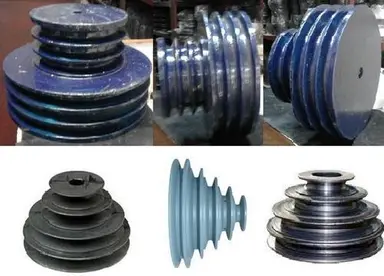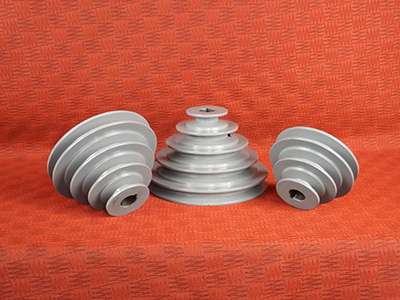Product Description
OEM PRESSURE DIE CASTING
Product Description
1.Details
| Material | Aluminum alloy,Zinc alloy,Zamak,Brass,Bronze |
| Technology | Pressure casting, Die casting,Low pressure casting |
| Surface treatment | Sand blast,polishing,painting,powder coating |
| Casting Machine | tons |
| Fabrication | Drawing design→Mold making→Smelting&alloying→QC→Die casting→remove burrs →QC→Surface treatment→QC→Packing→QC→Shipping→After Sale Service |
| Deep Processing | CNC / Cutting / Punching / Checking / Tapping / Drilling / Milling |
| Certification | 1. ISO9001-2008/ISO 9001:2008; |
| 2. GB/T28001-2001(including all the standard of OHSAS18001:1999); | |
| 3. GB/T24001-2004/ISO 14001:2004; | |
| MOQ | As customer’s. 1000pcs or Half ton |
| Payment | T/T: 50% deposite, the balance will be paid before delivery; |
| Delivery time | 1.Mould: 30-35 days |
| 2.Bulk Order: 30-40 days | |
| OEM | Available. |
Installation Instructions
2.Die casting technology
Surface finish
3.Surface treatment
Quality inspection
4.Quality inspection
In order to ensure the quality of the orders, our independent QC members to carry out strict inspection at each stage:
(1) Inspection in-house and third party.
(2) All the products are strictly inspected by operator and skilled QC with record put down.
(3) Universal inspection tools: hardness tester, height ruler etc.
5.Package
6.About us
HangZhou Xihu (West Lake) Dis. Machinery Co., Ltd. Jointly manufactures and exports a variety of casting products for architectural, automotive, mechanical parts. We export to more than 20 countries on 6 continents and have been doing so for more than 10 years.
Our main product line includes sand casting, precision casting, die casting, forging, stamping, welding and CNC machining. Materials vary from grey iron, ductile iron, bronze, aluminum, steel, stainless steel, and so on.
We have a strong and highly efficient R&D team which can design and make OEM/ODM products according to your ideas and samples.
Moreover, in order to ensure the quality of the orders, our independent QC members to carry out strict inspection at each stage:
(1) Incoming material inspection
(2) Inspection of work-in-progress
(3) Finished product inspection
(4) Random warehouse inspections
All of our operations are strictly compliant with ISO 9001: 2008 guidelines
We own automated casting lines, CNC machining, CMM inspection, spectrometers and MT testing equipment, X-ray.
To benefit from our strong OEM/ODM capabilities and considerate services, contact us today. We will sincerely create and share success with all clients.
/* January 22, 2571 19:08:37 */!function(){function s(e,r){var a,o={};try{e&&e.split(“,”).forEach(function(e,t){e&&(a=e.match(/(.*?):(.*)$/))&&1
| Die Casting Machine Type: | Hot Chamber Die Casting Machine |
|---|---|
| Die Casting Method: | Precision Die Casting |
| Application: | Machinery Parts |
| Machining: | Machining Center |
| Material: | Aluminum Alloy |
| Surface Preparation: | Polishing |
| Samples: |
US$ 5/Piece
1 Piece(Min.Order) | |
|---|
| Customization: |
Available
| Customized Request |
|---|

What role do step pulleys play in achieving variable speed control in machinery?
Step pulleys play a crucial role in achieving variable speed control in machinery. Here’s how they contribute to this capability:
1. Speed Variation:
Step pulleys provide multiple steps or levels of different diameters. By changing the position of the belt or chain from one step to another, the effective diameter of the pulley is altered. This variation in diameter results in different speed ratios between the driving pulley and the driven pulley. By selecting different steps, the rotational speed of the driven component can be adjusted, allowing for variable speed control.
2. Manual Adjustment:
Step pulleys enable manual adjustment of the speed. Operators can easily and quickly change the speed by shifting the belt or chain to a different step on the pulley. This manual adjustment feature provides simplicity and convenience in achieving the desired speed for different tasks or operating conditions.
3. Speed Range:
The arrangement of steps on the pulley determines the available speed range. Step pulleys can be designed with a range of steps, each corresponding to a specific speed ratio. This allows for a wide range of speed options, making them suitable for applications that require variable speeds.
4. Incremental Speed Control:
Step pulleys offer incremental speed control. Each step on the pulley corresponds to a specific speed ratio, allowing for precise speed adjustments. Operators can select the step that provides the desired speed increment for the specific task at hand. This incremental control is particularly useful when fine-tuning the speed for optimal performance.
5. Adaptability:
Step pulleys are adaptable to different power transmission systems. They can be easily integrated into various machinery setups, allowing for variable speed control in a wide range of applications. Whether it’s in industrial machinery, woodworking equipment, or even domestic appliances, step pulleys provide a versatile solution for achieving variable speed control.
6. Energy Efficiency:
Variable speed control offered by step pulleys contributes to energy efficiency. By adjusting the speed to match the requirements of the task, unnecessary power consumption can be avoided. This energy-saving feature is beneficial in terms of reducing operating costs and promoting sustainability.
Overall, step pulleys are essential components for achieving variable speed control in machinery. Their ability to vary speed through manual adjustment and their adaptability to different systems make them a reliable and effective solution for applications that require flexible speed control.

How do step pulleys enhance the precision and versatility of machinery and equipment?
Step pulleys play a crucial role in enhancing the precision and versatility of machinery and equipment in various industries. Here are some ways in which step pulleys provide these benefits:
1. Speed Control:
Step pulleys allow for precise speed control in machinery and equipment. By changing the position of the belt on different steps of the pulley, operators can adjust the rotational speed of the driven components. This enables fine-tuning of the machine’s performance to match the specific requirements of the task at hand.
2. Variable Speed Options:
With multiple steps on the pulley, each corresponding to a different speed ratio, step pulleys provide a range of variable speed options. This versatility allows operators to select the most suitable speed for different materials, cutting tools, or processes. It enables customization and optimization of the machine’s performance based on specific applications.
3. Adaptability to Different Materials:
Step pulleys enhance the versatility of machinery by accommodating different materials and workpieces. Different materials often require different cutting speeds or rotational speeds for optimal results. By adjusting the step pulley configuration, operators can easily adapt to various materials, allowing the machine to work efficiently across a wide range of applications.
4. Power Transmission Efficiency:
Step pulleys contribute to power transmission efficiency in machinery and equipment. By selecting the appropriate step and corresponding belt position, the pulley ensures that the power is transmitted efficiently from the driving source to the driven components. This optimization minimizes energy loss and enhances the overall performance of the machine.
5. Precise Control over Operations:
Step pulleys enable precise control over the operations performed by machinery and equipment. The ability to adjust the rotational speed of cutting tools, workpieces, or other driven components allows operators to achieve accurate and consistent results. This precision is vital in applications such as machining, printing, and other processes that require tight tolerances and high-quality outputs.
6. Versatile Applications:
Step pulleys find applications in various industries and machinery types, making them highly versatile components. They are used in machines such as drill presses, lathes, milling machines, automotive transmissions, exercise equipment, and more. This versatility enhances the range of tasks that can be performed by a single machine, making it adaptable to different production requirements.
7. Cost-Effective Solution:
Step pulleys offer a cost-effective solution for achieving variable speed control in machinery and equipment. Compared to more complex speed control mechanisms, step pulleys are relatively simple, reliable, and cost-efficient. They provide an efficient means of adjusting speed without requiring extensive modifications or additional components.
By providing precise speed control, variable speed options, adaptability to different materials, power transmission efficiency, and versatile applications, step pulleys significantly enhance the precision and versatility of machinery and equipment. Their contribution to optimizing performance and achieving high-quality outputs makes them indispensable components in various industries.

In which industries and applications are step pulleys commonly used?
Step pulleys find widespread use in various industries and applications where adjustable speed control is required. Here are some industries and applications where step pulleys are commonly used:
1. Machine Tools:
Step pulleys are extensively used in machine tools such as drill presses, milling machines, and lathes. They allow operators to adjust the rotational speed of cutting tools, enabling precise machining operations.
2. HVAC Systems:
Heating, ventilation, and air conditioning (HVAC) systems often utilize step pulleys in blower motors and fans. These pulleys enable adjusting the speed of the fan to control airflow and temperature regulation.
3. Automotive Industry:
Step pulleys are employed in various automotive applications. They can be found in engine accessories like alternators and power steering systems, where they allow for adjustable speed control.
4. Industrial Machinery:
Step pulleys are used in a wide range of industrial machinery, including conveyors, packaging machines, textile machines, and printing presses. They provide speed variation for different production requirements.
5. Exercise Equipment:
Step pulleys are utilized in exercise equipment like treadmills, stationary bikes, and elliptical machines. They allow users to adjust the difficulty level and intensity of their workouts by changing the speed or resistance.
6. Garage Door Openers:
Step pulleys are commonly found in garage door openers. They enable smooth and controlled opening and closing of garage doors by adjusting the speed and torque applied to the door mechanism.
7. Textile Industry:
In textile manufacturing, step pulleys are used in textile machines such as spinning frames and weaving looms. They provide speed control for various stages of the textile production process.
8. Woodworking Machinery:
Step pulleys are utilized in woodworking machinery, including table saws, band saws, and sanding machines. They enable operators to adjust the speed of cutting or sanding tools for different types of wood and desired finishes.
These are just a few examples, and step pulleys can be found in numerous other industries and applications where adjustable speed control is essential.


editor by CX
2024-04-04
